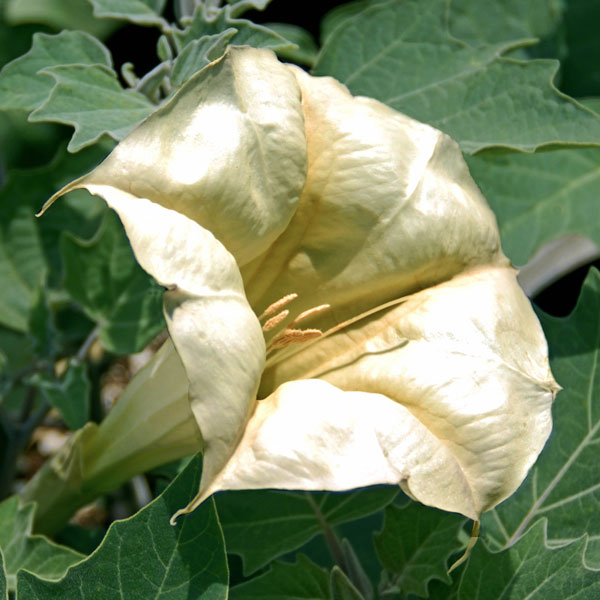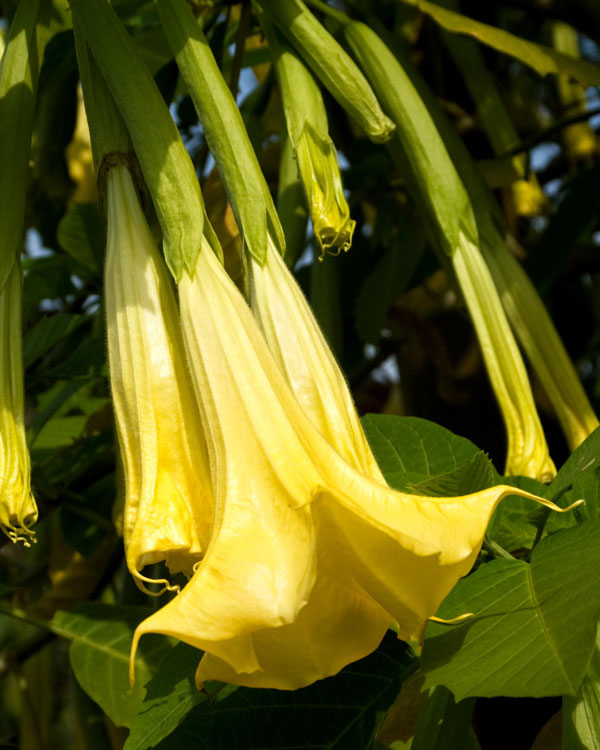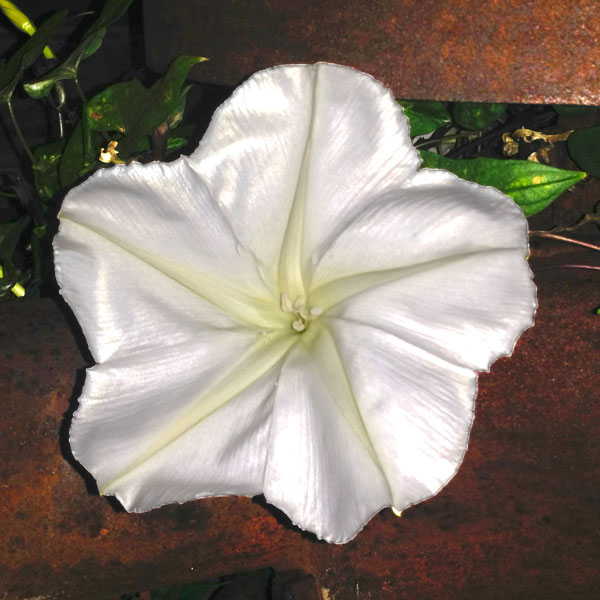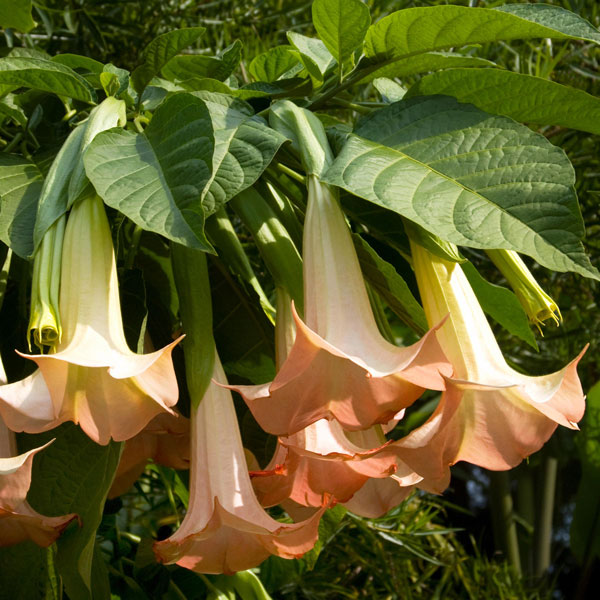Beauties of the night
Not all the plants that we grow act like sunflowers and daylilies. They don’t all greet the new days with bright, cheerful blooms. Some come out at night, and they’re wonderful additions to the late evening landscape. Here are some of the best.

Moonflower, or angel’s trumpet. Ranchers call this plant jimson weed. It’s a Datura, and its fragrant flowers are borne slightly upward to outward. The pure white type is most common, but there is a purple and white variety in the market as well. Do note that this plant is toxic and should not be grown around children. It is a short-lived perennial that reseeds itself freely.

Brugmansia. Perhaps no night-flowering plant is so showy. This is a sub-tropical beauty that can grow to 6 or 8 feet tall and up to 8 feet wide. Its 10-inch-long flowers hang straight down, distinguishing it from the Daturas just mentioned. Flower colors include yellow, pink and white.

Moonvine. As soon as you see this lush, white-flowering vine you’ll know it’s a sister to morning glories. Its petals are all joined, just like those of its day-blooming kin. But these buds open late in the afternoon, and they’re closed by mid-morning the next day. It’s a refined annual vine that is handsome climbing up trellises or spilling over fences.
Four o’clocks. As the name suggests, these shrubby perennials bloom from late afternoon on through the night. Their flowers look somewhat akin to small petunias, and they’re produced in a wide variety of bright yellows, oranges, pinks and orchids. Many of the flowers are striped and two-toned, and it’s not uncommon for flowers of different colors to be produced on the same plant. Four o’clocks do best in afternoon shade and with ample moisture during the summer. They produce fleshy roots that carry the plants from one year to the next.


